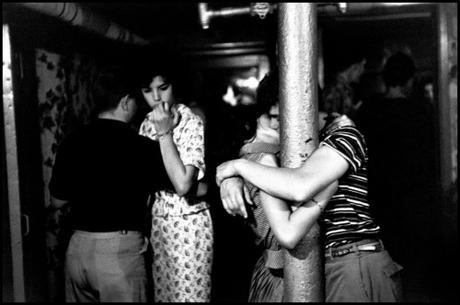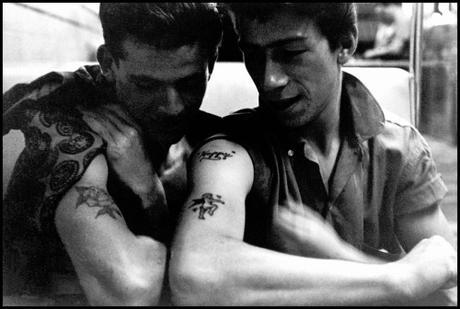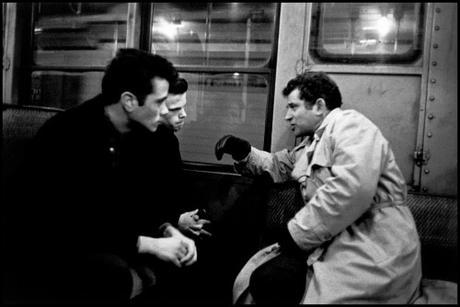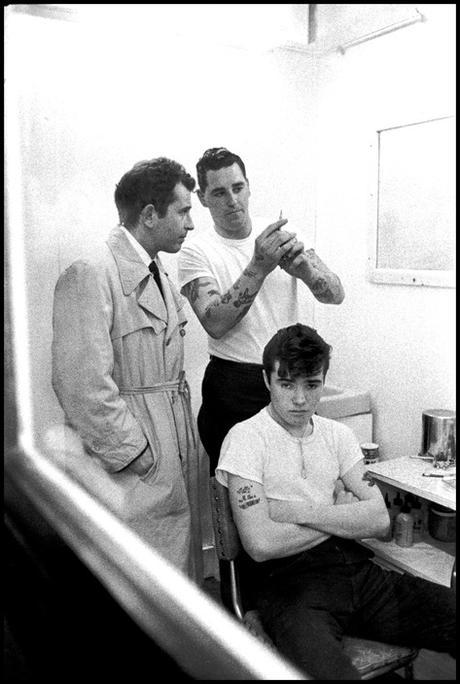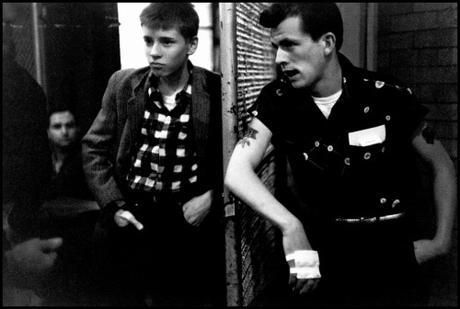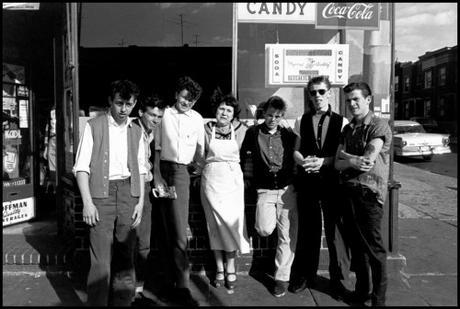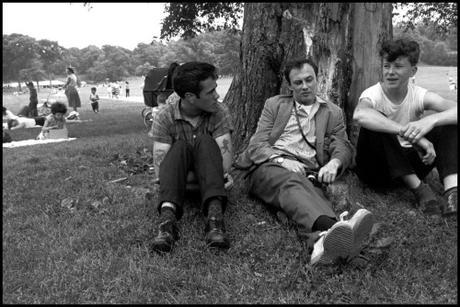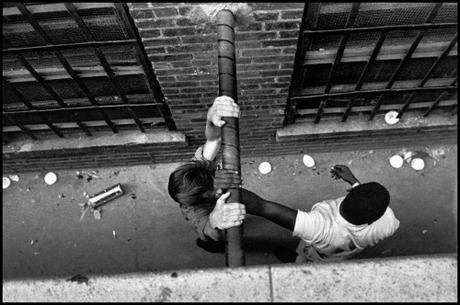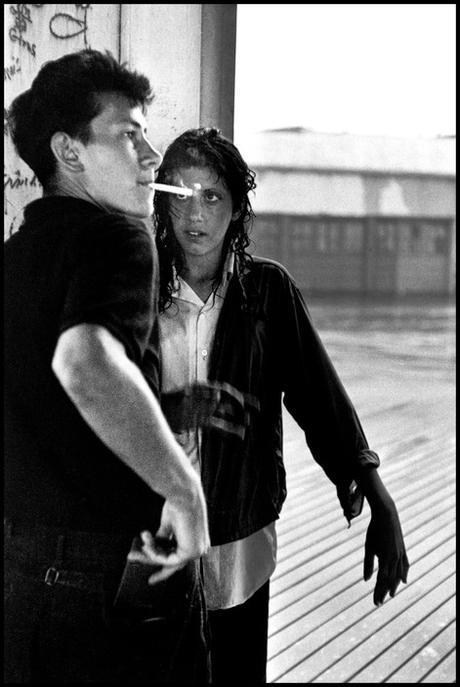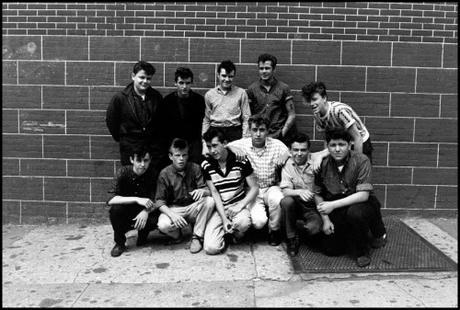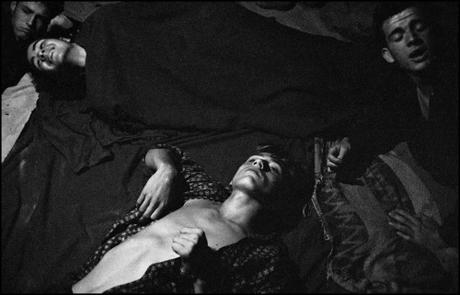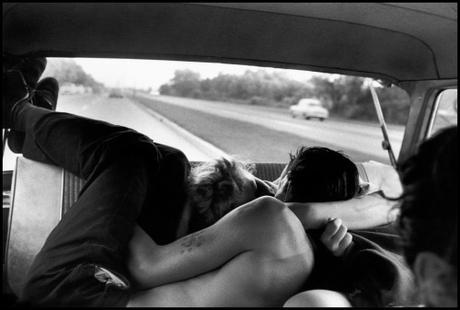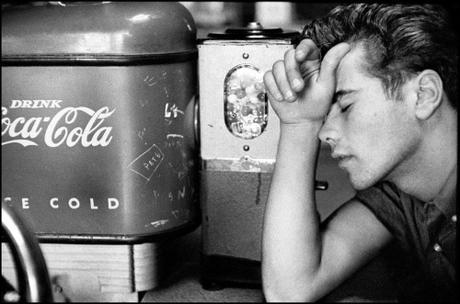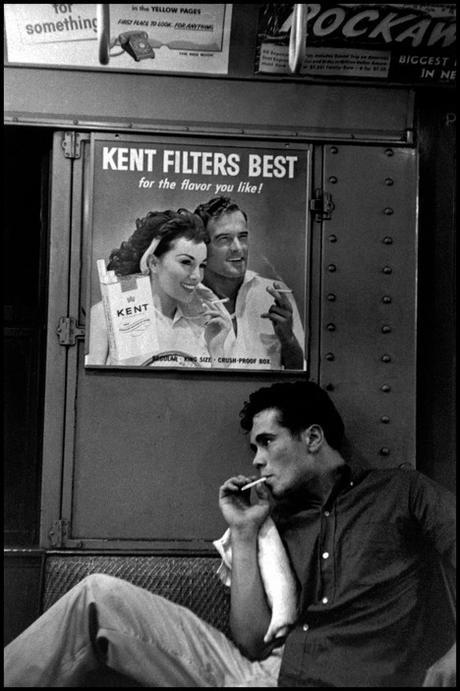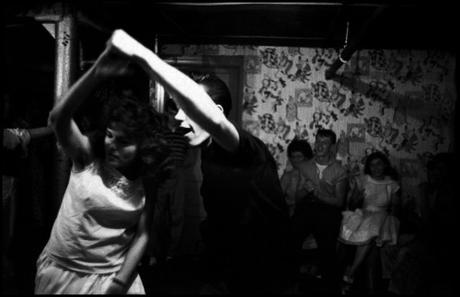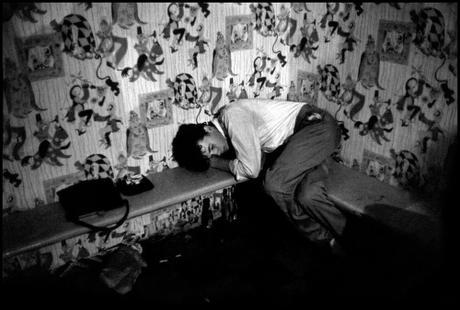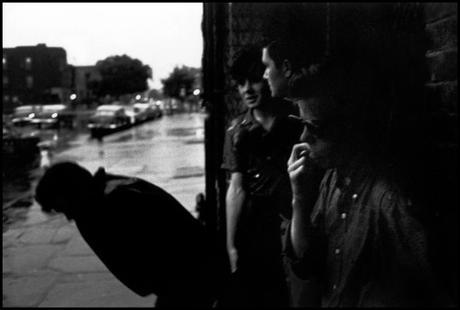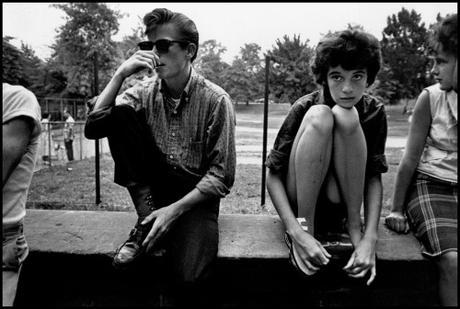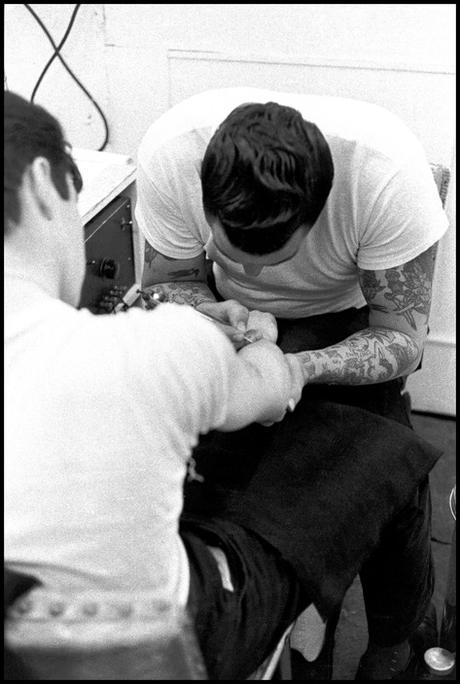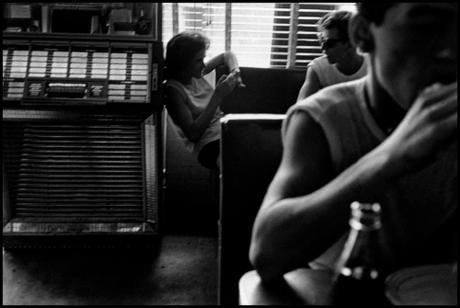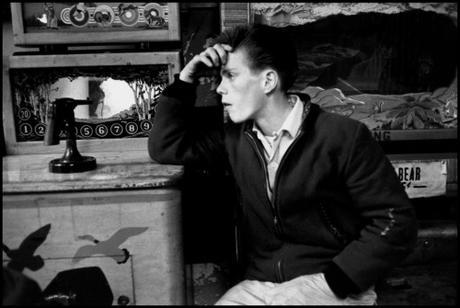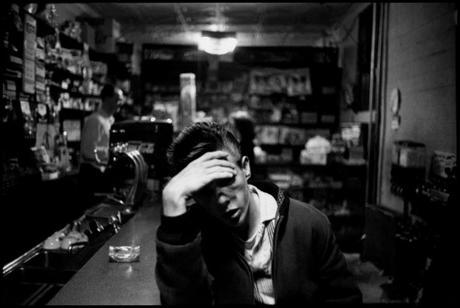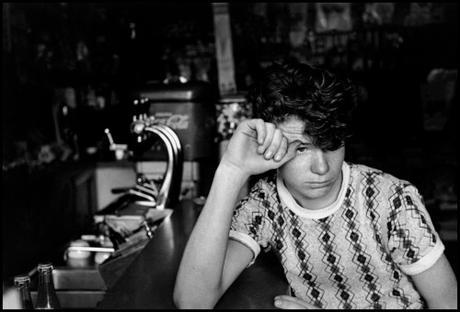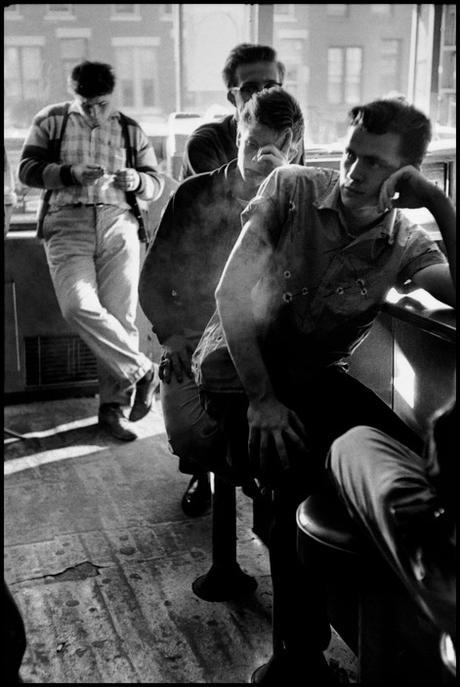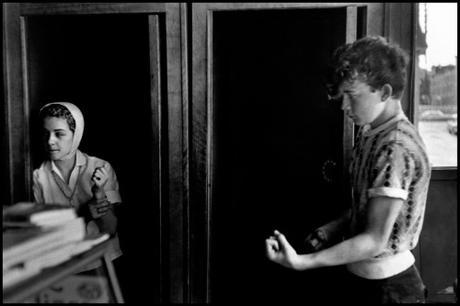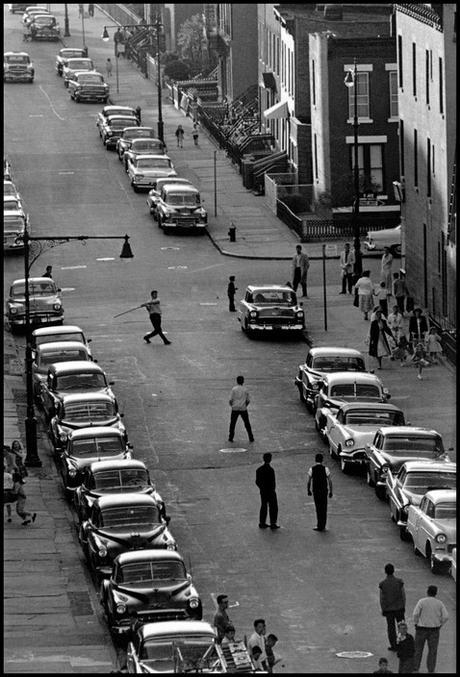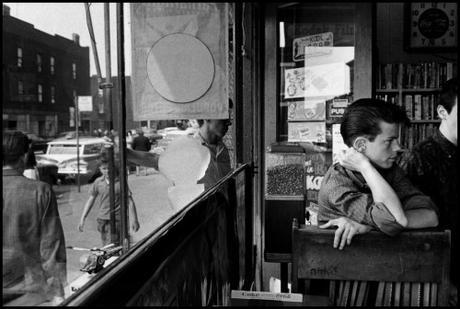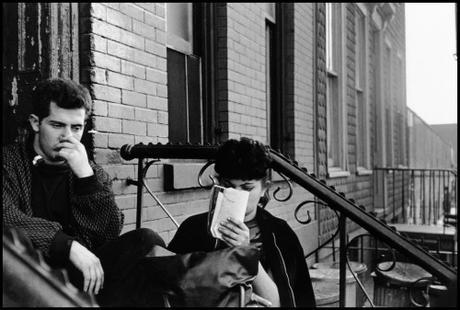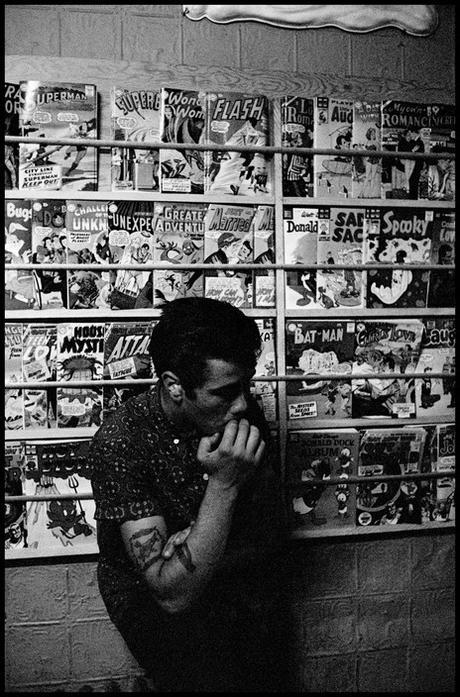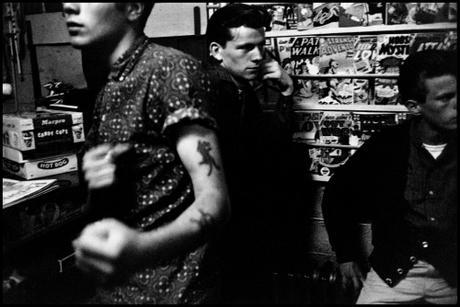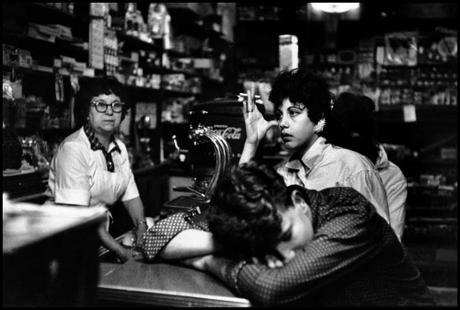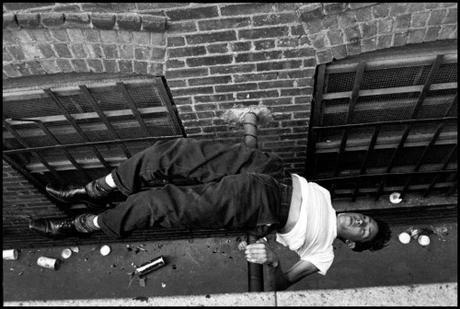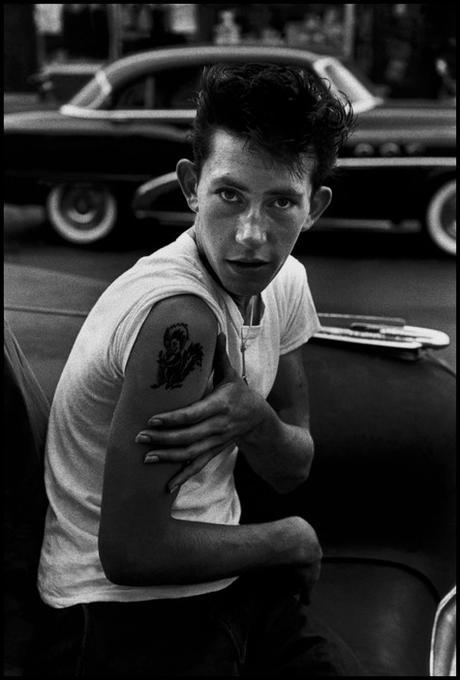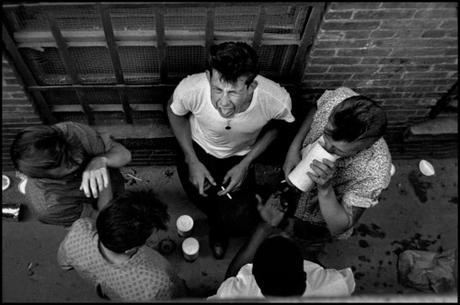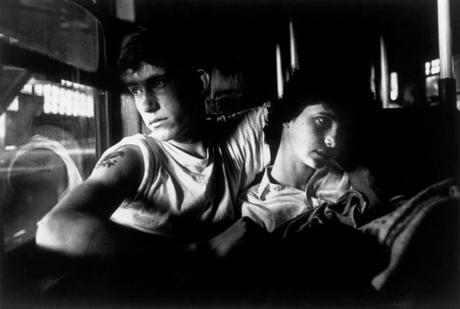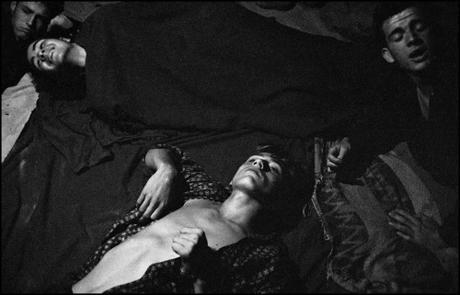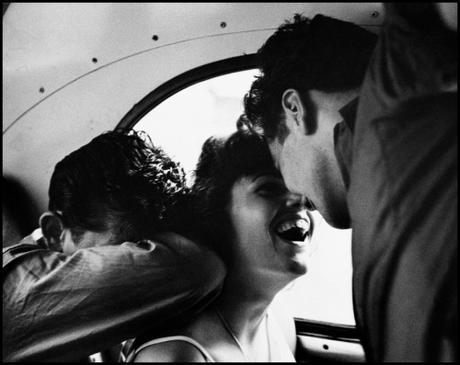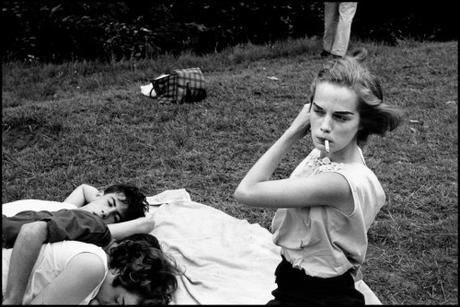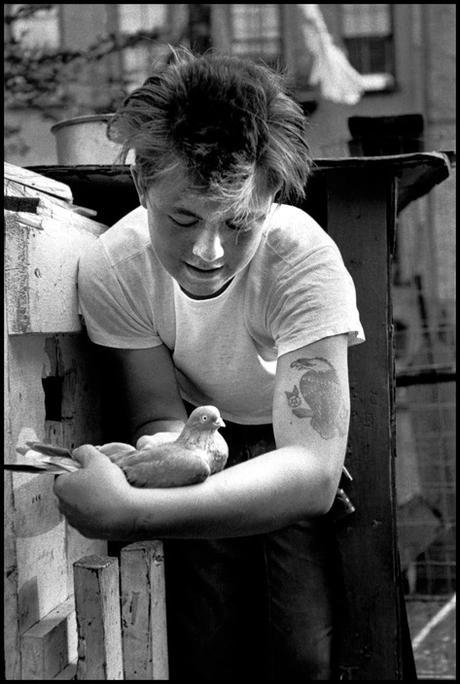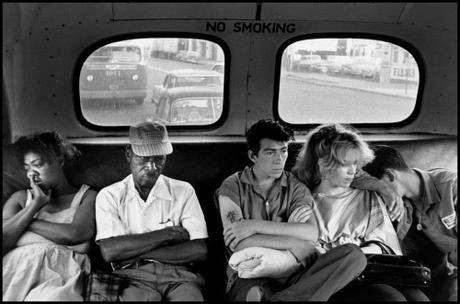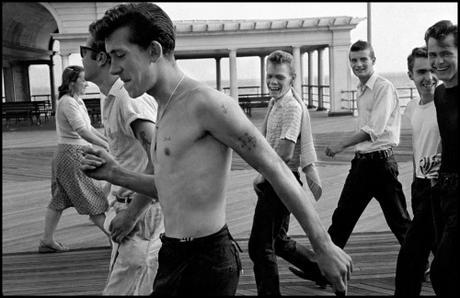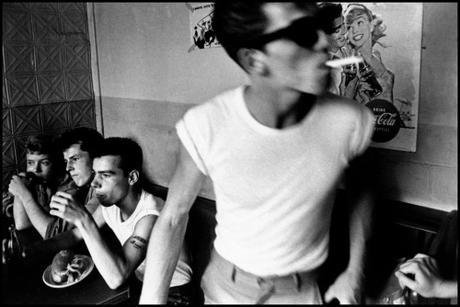
American style is often thought of as the sack suit with an oxford-cloth button down, or a tweed sport coat with flat-front chinos. In the immediate postwar period, however, the US was also known for another look – one grittier and angrier than its Ivy League cousin. Bruce Boyer wrote about it in his book Rebel Style:
After World War II, the bourgeoning middle class looked in two different directions for the more outward manifestations of style: either to a version of the Eastern WASP Establishment for the traditional business uniform and the slightly more casual Ivy League attire; or to the underclasses, which favored the more heady and urbane zoot suit or the rural motorcycle/ blue-collar look. Most middle-class young men – particularly those who had been in the Army and enrolled in colleges through the economic incentives through the GI Bill – looked to the Eastern Establishment for inspiration. As epitomized in the film The Man in the Gray Flannel Suit (1956), Establishment dress was the somber business uniform of corporate America in an era of understated power.
It’s really the ubiquity of that Establishment dress that made American rebel style so powerful. Slim jeans, slung low on the hips, worn with fitted t-shirts and beat-up shoes came to symbolize a sort of disaffection with middle-class American life. And as Bruce notes, street clothes (i.e. “work clothes worn by ex-GIs, cowboys, farmhands, and industrial and outdoor laborers, and ethnic dress assumed by second-generation working-class immigrants”) have been a source of inspiration for designers ever since. By the end of the 20th century, the rebel look won out, even if there was no more Establishment dress to rebel against.
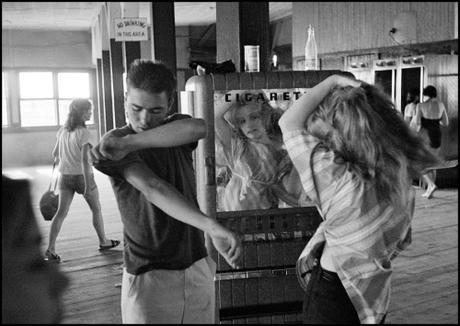
One of my favorite books for the American rebel look is Bruce Davidson’s Brooklyn Gangs. Davidson shot the photos in the spring and summer months of 1959, after he read about the outbreaks of gang violence in Brooklyn’s Prospect Park. When he traveled to Brooklyn to find his subjects, he met a group of teens who called themselves The Jokers. They were about 16 years old at the time; Davidson was 25.
Davidson’s Brooklyn Gangs is one of the first in-depth looks at rebellious youth culture in the postwar period. Copies of the book are prohibitively expensive for all but the serious collector, although you can view the images for free at Magnum. The photos have such a great, heady feel about them – Davidson captures the teens as they wander around Brooklyn and beyond, killing time on summer nights at the park, or during the day at a local, neighborhood diner. There’s a lot of listlessness and ennui.
The most memorable photo might be the one above. Here, a young blonde named Cathy fixes her hair in front of a cigarette machine as she waits for a Staten Island ferry. One of the younger gang members described her as “beautiful like Brigitte Bardot.” Sadly, later in life, Cathy put a shotgun in her mouth and pulled the trigger.
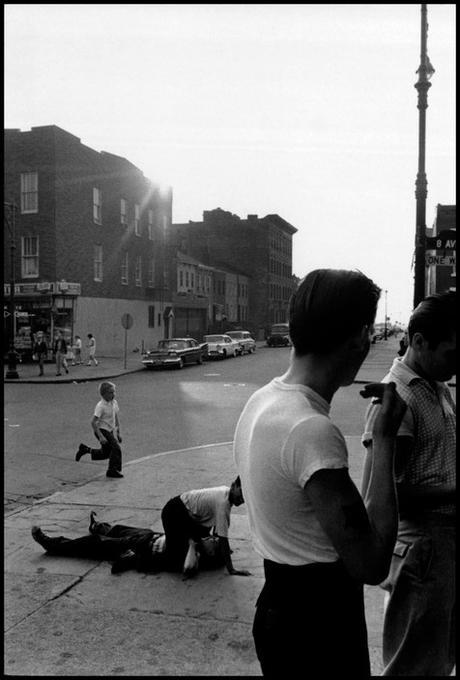
The photo series has a ton of style inspiration, even if not a lot of style direction (in many of the photos, the male subjects are half-clothed and shirtless). Still, there’s this great, relaxed, summer vibe. Sean O’Hagen wrote of the series in The Guardian: “The male dress style is Italian hipster meets American rockabilly – Sinatra meets Elvis. The threads are sharp, the hairstyles tall and quiffed, and the attitude, as caught by Davidson’s camera, is either defiant or aloof to the point of disinterested.”
Maybe some useful takeaways: slim- and fuller-cut jeans look great. At the time, many of the teens probably wore the 1955 version of Levi’s 501s, an anti-fit model with a wider leg. In today’s terms, the slimmer 1947 and 1954 cuts may be more wearable. The first has a slim-straight leg; the other slim-tapered.
I also like vintage-cut t-shirts, which tend to have slightly more fitted bodies and shorter sleeves than modern styles. I wear Barns, although they’re hard to find outside of Japan. More readily available in the US is Levi’s Vintage Clothing, but be warned that the sleeves are really short. Lady White Co. is a little more forgiving and they have a model with an interesting pocket design (I size up). You can wear the tee on its own or layer it under a camp-collar shirt, such as this one from Officine Generale.
For a slightly more modern take on the same look, imogene + willie is worth checking out. The brand is mostly about jeans and t-shirts, but the cuts feel less mid-century. They also have a great section for one-of-a-kind vintage finds.

